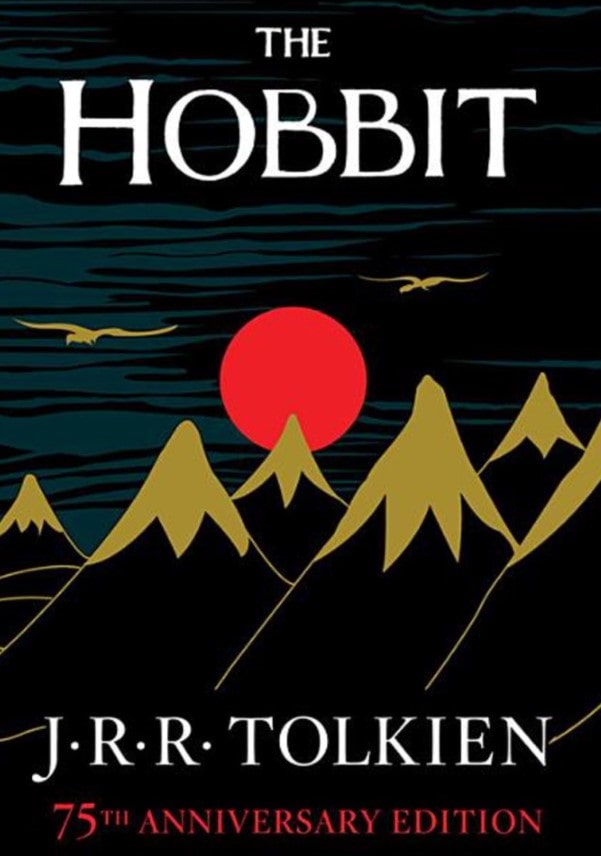The Hobbit by J.R.R. Tolkien has long enthralled readers with its intricate story, wacky characters, and magical Middle-earth. This well-known fantasy book, which was first published in 1937, acts as an introduction to J. R. R. Tolkien’s longer masterpiece, The Lord of the Rings. The Hobbit is a timeless masterpiece because, while being a children’s novel, it has a depth that appeals to readers of all ages. We will discuss the themes, characters, and literary and cultural influences of The Hobbit in this book discussion.
Table of Contents
A Brief Synopsis
The main plot of The Hobbit revolves around Bilbo Baggins, a lowly hobbit who has a peaceful life in the Shire. When the wizard Gandalf and a party of thirteen dwarves under the command of Thorin Oakenshield show up at his house, his tranquil existence is upended. In order to rescue the Lonely Mountain and its riches from the terrifying dragon Smaug, they recruit Bilbo’s assistance. Bilbo sets out on an unexpected journey, which, despite his initial reluctance, turns him from a cautious hobbit into a cunning and valiant hero.
Along the way, Bilbo meets trolls, elves, and goblins; he also experiences many obstacles and learns the value of friendship, bravery, and loyalty. All of these lessons come together as he travels through dangerous terrain. The narrative takes place in a vividly imagined setting that is teeming with exotic animals, complex mythology, and an air of wonder that beckons readers to journey with Bilbo on his adventures.
Themes and Motifs
The idea of change and development is one of The Hobbit’s main themes. At first, Bilbo is a shy and devoted hobbit who is afraid to leave the comforts of his home in the Shire. But as he overcomes obstacles and goes through dangerous situations, he develops into a more self-assured and resourceful person. Readers can relate to this self-discovery trip since it highlights the notion that pushing outside of one’s comfort zone can result in personal development.
The value of friendship and companionship is one of the book’s main themes. Bilbo develops close relationships with the dwarves on his journey, especially with Thorin, Kili, and Fili. Their same experiences strengthen bonds between them and show how effective cooperation and support can be when facing challenges. The characters’ friendship not only improves the story but also serves as an example of the value of loyalty and sticking by friends.
The Hobbit also explores the intricacies of greed and the effects it can have. Character conflict eventually results from the search for the wealth, especially as many factions—men, dwarves, and elves—compete for the gold that Smaug is guarding. This debate serves as a warning about the perils of avarice and the harm it can do to societies and interpersonal relationships.
Characters that Captivate
Characters that Captivate The Hobbit’s fascination stems from the characters created by Tolkien. As the story’s unusual hero, Bilbo Baggins wins readers over with his relatability and development. He meets opponents significantly stronger than himself, and his greatest strengths become his knowledge, ingenuity, and wit. The sage wizard Gandalf acts as a mentor to Bilbo, offering him advice and the motivation he needs to follow his spirit of adventure.
The dwarves give the story more complexity because they all have unique personalities and traits. The proud leader Thorin Oakenshield personifies the difficulties and responsibilities of leadership. Some characters, like Balin, are the voices of reason; others, like Kili and Fili, bring youthful energy. They form a varied group that enhances the narrative and brings to light different viewpoints on bravery, loyalty, and the search for one’s place in the world.
The Impact of The Hobbit on Literature and Culture
The Hobbit has had a lasting impact on popular culture and literature ever since it was published. Numerous adaptations, such as animated films, live-action films, stage plays, and video games, have been influenced by it. The most famous adaptation is the trilogy of films directed by Peter Jackson, which vividly rendered Tolkien’s universe and included a longer story. By introducing The Hobbit to new audiences, these adaptations have strengthened the book’s status in the fantasy genre and reignited interest in Tolkien’s writing.
Beyond adaptations, numerous fantasy writers and storytellers have been impacted by The Hobbit. Its elaborate character development, world-building, and adventure-themed themes have influenced a lot of modern fantasy literature. The novel’s influence can be observed in other works that tackle related themes of friendship, bravery, and the fight against evil forces.
Conclusion: A Journey Worth Taking
A famous classic that still enchants readers everywhere is The Hobbit. All ages of audiences can relate to its examination of friendship, personal development, and the dangers of greed. J.R.R. Tolkien encourages us to consider our own lives and the adventures that lie ahead of us outside of our comfort zones through Bilbo’s voyage. Readers are reminded as they turn the pages of this classic story that every adventure starts with a single step, which occasionally results in a transformative journey of self-discovery. The Hobbit invites you to go out on an amazing journey into the center of Middle-earth, whether you are rereading the tale or experiencing it for the first time.



